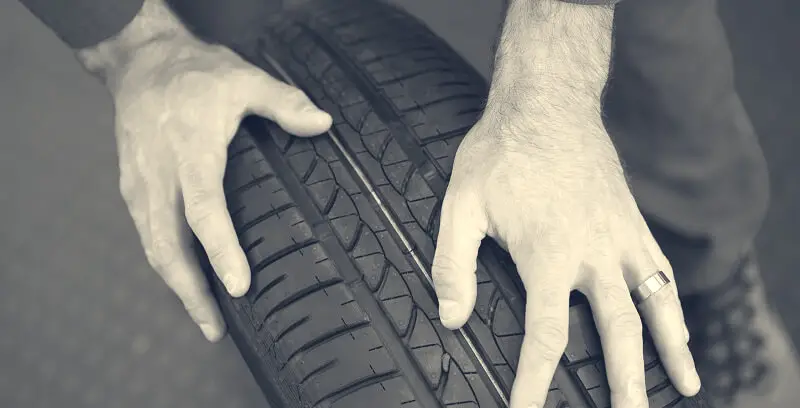Understanding Tire Circumference

Tire circumference is a vital aspect of vehicle performance and safety that often goes unnoticed by many drivers. The circumference of a tire refers to the distance it covers in a single rotation, which directly impacts the vehicle’s speedometer reading, fuel efficiency, and overall performance.
Factors that Affect Tire Circumference
Several factors can affect the circumference of a tire. These factors can cause variations in the tire’s diameter and overall circumference, which can impact the vehicle’s speedometer reading, fuel efficiency, and overall performance. Here are some of the factors that can affect tire circumference:
Tire Size & Type
The size and type of tire you choose for your vehicle play a significant role in determining its circumference. Tires come in various sizes and types, such as all-season, performance, or off-road tires. Each type has a unique circumference based on its construction and purpose.
For example, off-road tires tend to have larger circumferences due to their aggressive tread patterns, while performance tires often have smaller circumferences for improved handling and responsiveness.
Inflation Pressure
Tire inflation pressure directly impacts the tire’s circumference, as it affects the tire’s contact patch with the road. Overinflated tires have a smaller contact patch and a larger circumference, while underinflated tires have a larger contact patch and a smaller circumference. Proper tire inflation is essential for accurate tire circumference and optimal tire performance and longevity.
Wear & Tear
As tires wear down over time, their circumference decreases. This reduction in circumference can cause inaccurate speedometer readings and negatively impact vehicle performance. Regular tire maintenance, such as rotations and alignments, can help ensure even tire wear and maintain optimal tire circumference.
Environmental Factors
Environmental factors like temperature and road conditions can also impact tire circumference. For example, cold temperatures cause tires to contract, resulting in a slightly smaller circumference. On the other hand, hot temperatures can cause tires to expand, leading to a larger circumference. Also, driving on rough or uneven surfaces can cause uneven tire wear, affecting tire circumference.
Why Tire Circumference Matters
Tire circumference is an important factor that can affect various aspects of a vehicle’s performance and overall driving experience. Here are some reasons why tire circumference matters:
Accurate Speedometer Readings
Accurate tire circumference is crucial for maintaining correct speedometer readings. An incorrect tire circumference can cause your speedometer to display a higher or lower speed than your actual driving speed, which can be dangerous and lead to potential traffic violations.
Improved Fuel Efficiency
Proper tire circumference contributes to improved fuel efficiency by ensuring that your vehicle’s engine works at the optimal speed. When the tire circumference is off, it can result in excessive fuel consumption and reduced overall vehicle performance.
Increased Performance
A correct tire circumference helps maintain the intended performance of your vehicle by ensuring that the tires are operating within their designed parameters. Inaccurate tire circumference can lead to compromised handling, braking, and acceleration, which can negatively impact your driving experience and safety.
Reduced Wear & Tear
Maintaining the proper tire circumference helps reduce wear and tear on your vehicle’s suspension, transmission, and other components. Incorrect tire circumference can cause excessive stress on these parts, leading to premature wear and costly repairs.
The Formula For Calculating
Tire circumference can be calculated using the formula:
C = 2 * π * R
where C is the tire circumference, π (pi) is a constant approximately equal to 3.14159, and R is the tire’s radius (half the diameter).
A step-by-step guide to calculating tire circumference
- Determine the tire size, typically found on the sidewall of the tire. It consists of a series of numbers and letters, such as P225/50R17.
- Locate the tire’s aspect ratio (the middle number, in this example, 50), representing the height of the tire’s sidewall as a percentage of its width.
- Calculate the tire’s sidewall height by multiplying the width (the first number, in this case, 225) by the aspect ratio and dividing by 100. In this example: (225 * 50) / 100 = 112.5 mm.
- Convert the sidewall height to inches by dividing by 25.4. In this example: 112.5 / 25.4 = 4.43 inches.
- Determine the wheel diameter, which is the final number in the tire size (in this example, 17 inches).
- Calculate the tire diameter by adding twice the sidewall height to the wheel diameter. In this example: (2 * 4.43) + 17 = 25.86 inches.
- Calculate the tire radius by dividing the tire diameter by 2. In this example: 25.86 / 2 = 12.93 inches.
- Finally, calculate the tire circumference using the formula C = 2 * π * R. In this example: 2 * 3.14159 * 12.93 = 81.19 inches.
Conclusion
Proper tire circumference is essential for optimal vehicle performance, safety, and fuel efficiency. Factors such as tire size, type, inflation pressure, wear and tear, and environmental conditions can all impact tire circumference. Regular tire maintenance and monitoring can help ensure accurate tire circumference, leading to a safer and more enjoyable driving experience.
Following these recommendations and understanding the importance of tire circumference can enhance your vehicle’s performance, safety, and fuel efficiency, ultimately contributing to a better driving experience.

